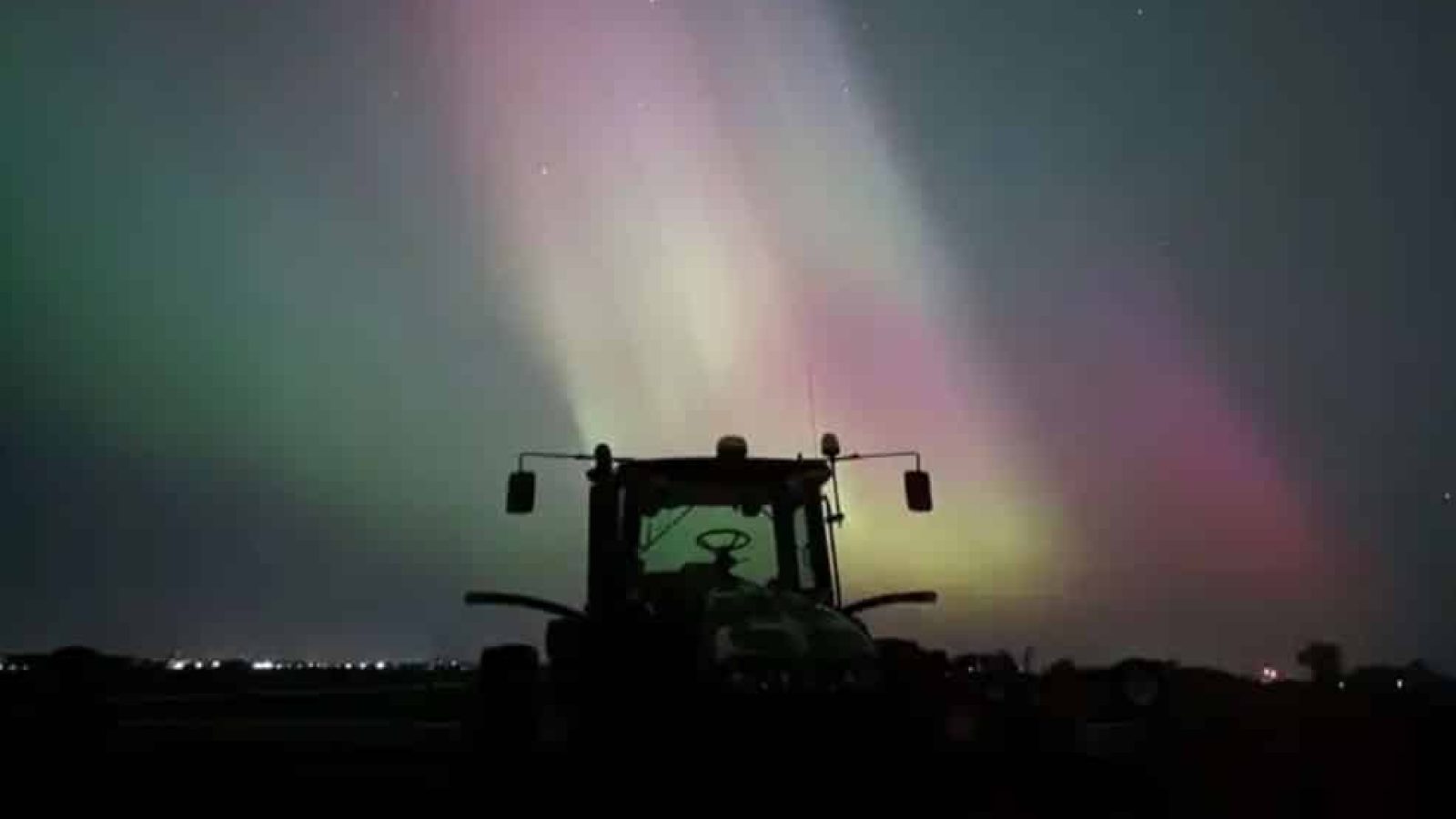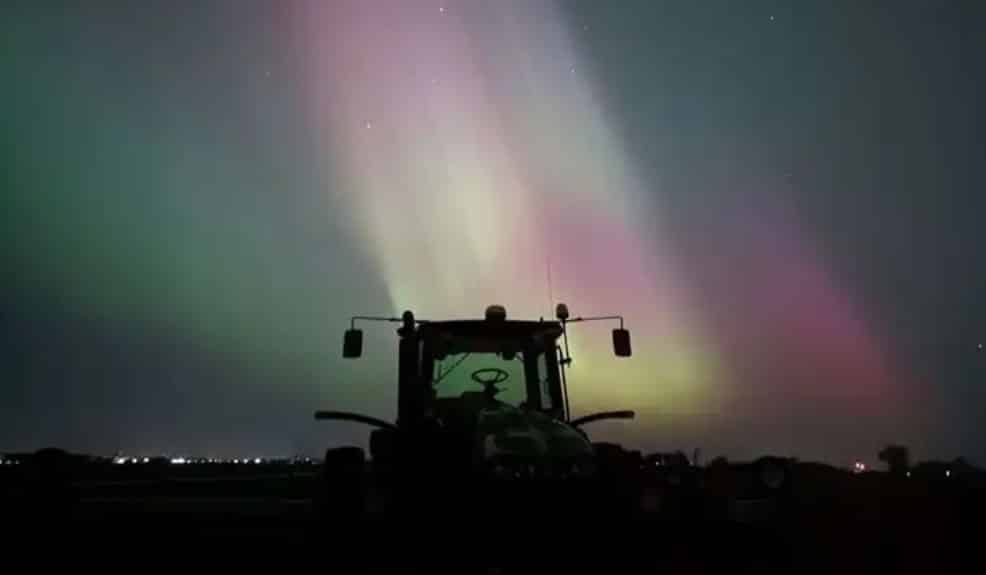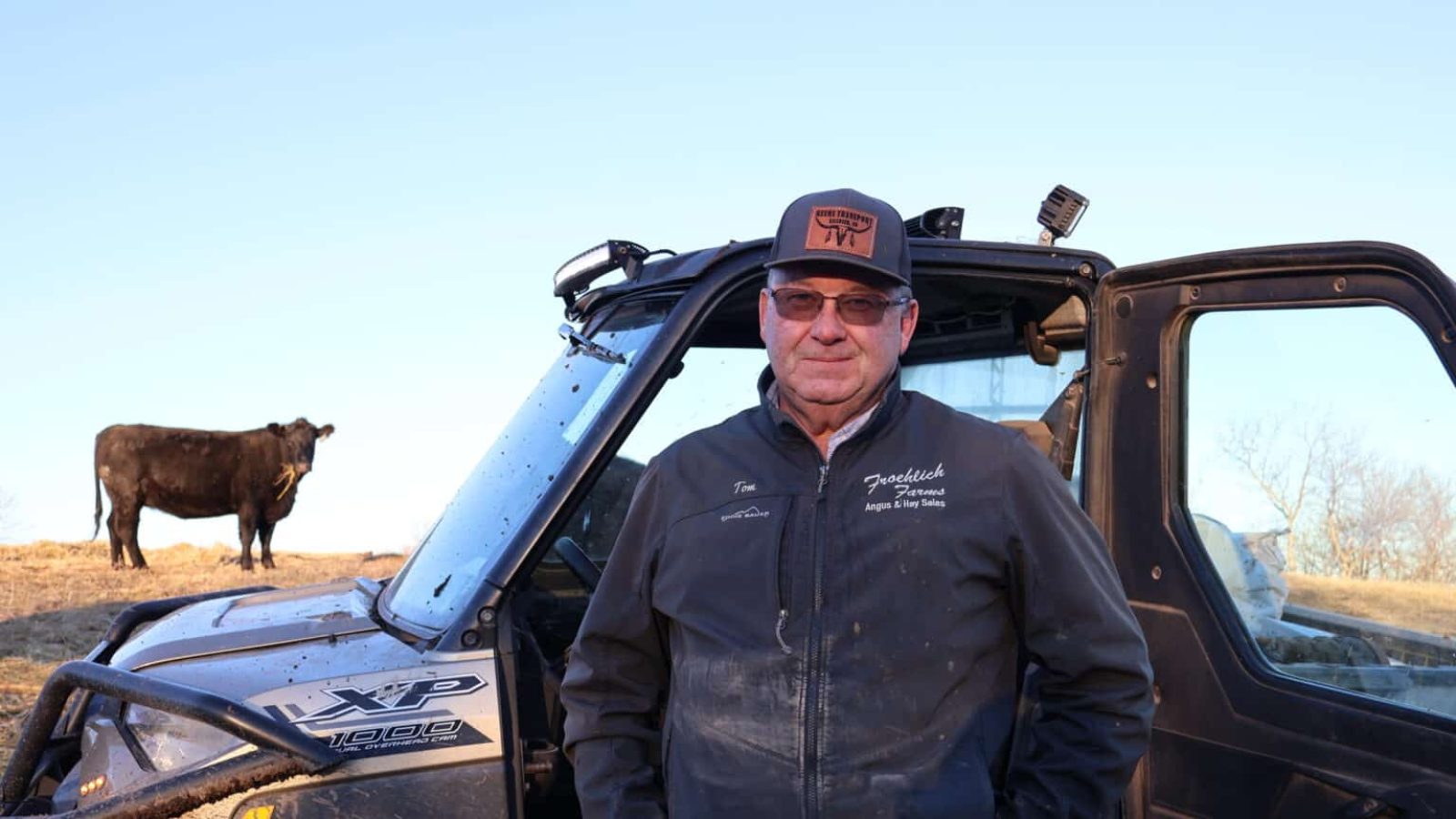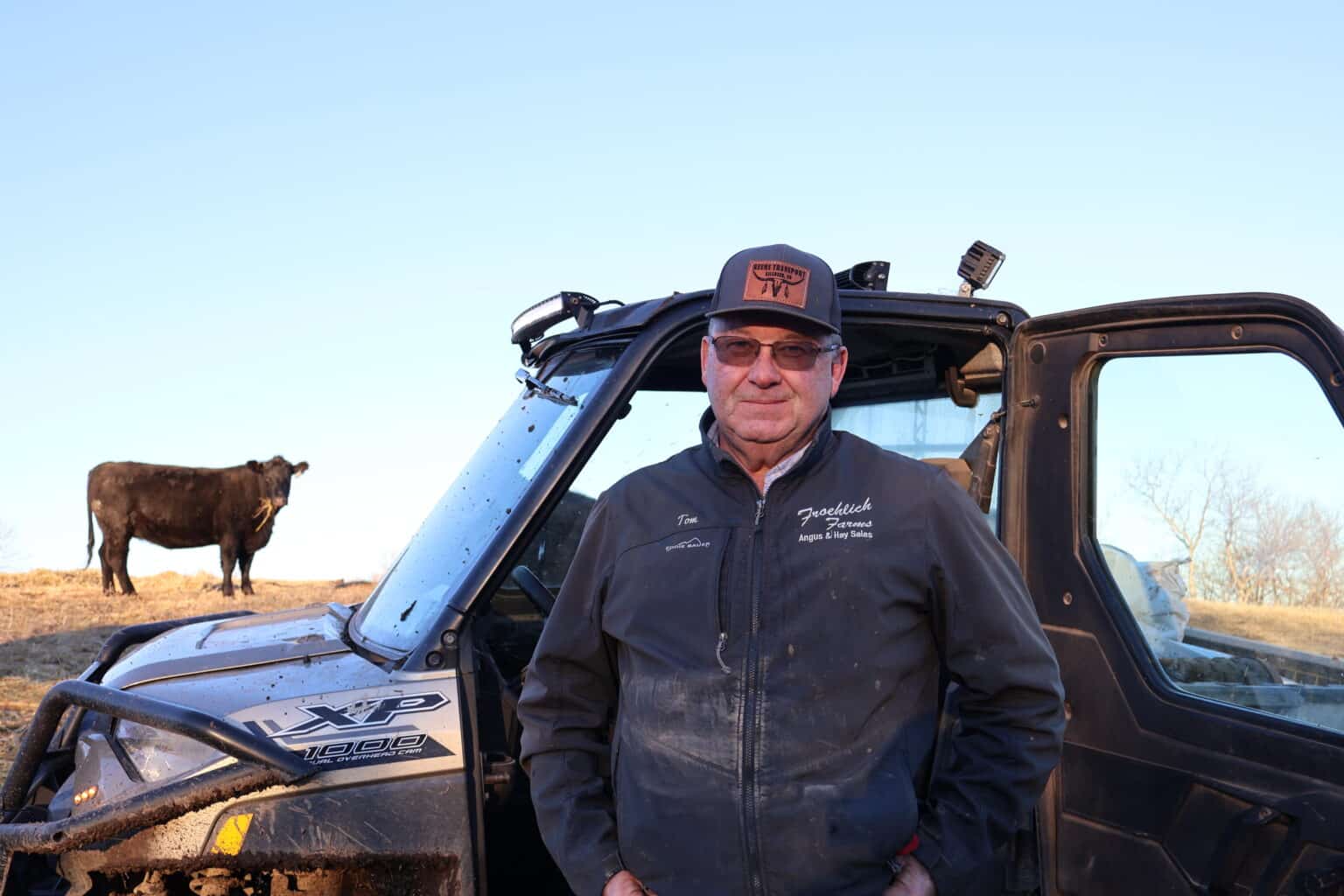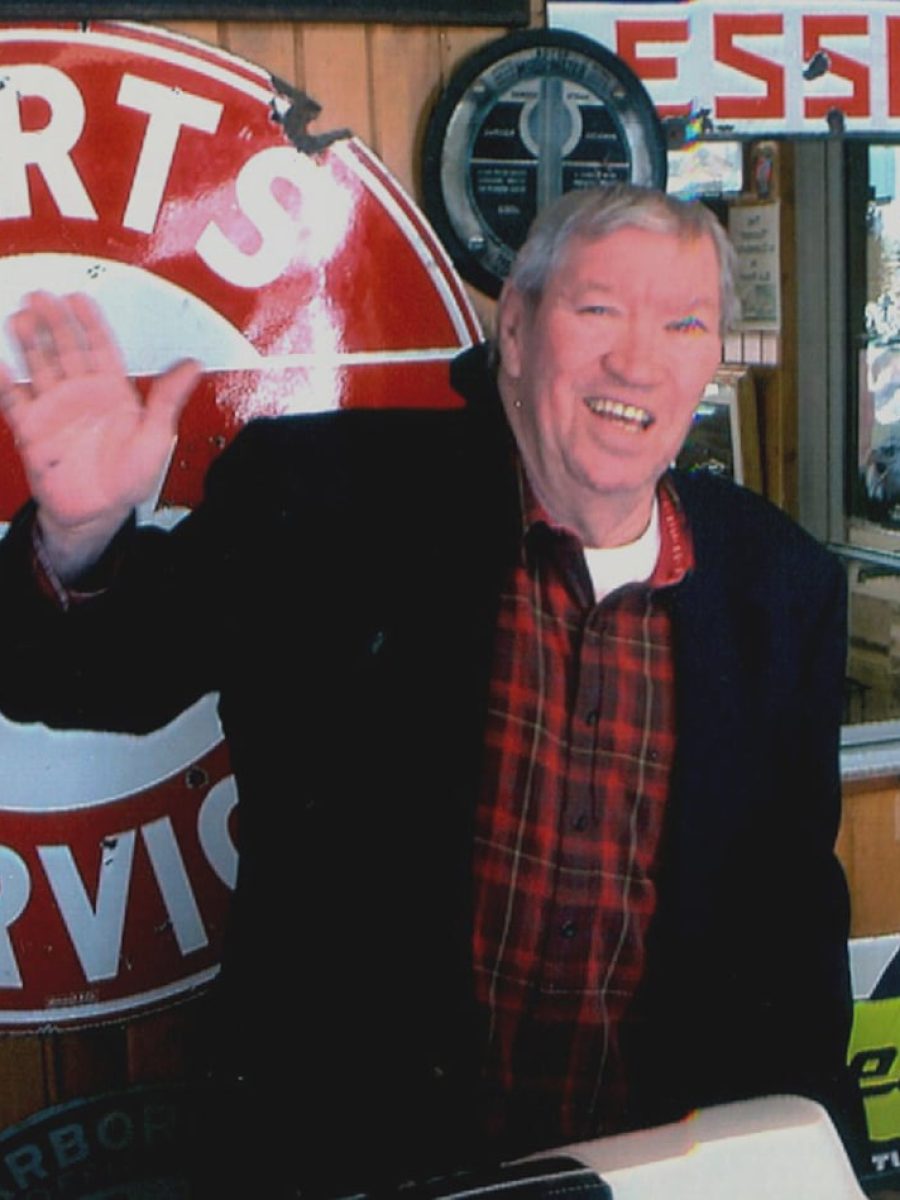TYNDALL, SD – Tyler Van Winkle is passionate about raising cattle and he loves sharing the experience with his four young children.
“Not much compares to seeing those little calves right after calving and getting to help care for them – the fact that my kids can enjoy this with me,” said the third generation Tyndall rancher. “We get on our horses and the kids help me gather and process the cattle, do the chores. It’s pretty humbling and I would not trade it for the world.”
Because Van Winkle and his wife, Brittany, run a cow/calf operation and background calves on forage for their neighbor, they have nearly no need to raise grain crops. So, each growing season he plants 60 percent of the acres he manages to annual forages: barley that he cuts for hay followed by German millet or Sudan grass followed by a grazing forage mix or winter wheat. The remaining land is pasture.
Van Winkle’s freedom to forgo grain crops and raise only forage to feed his cattle is largely due to forage insurance products designed for livestock producers and provided through the U.S. Department of Agriculture’s Risk Management Administration.
“Now that we have risk management tools, we converted acres from grain to forage,” explained the third-generation Tyndall rancher. “We were just growing the grain to sell and using that money to purchase forage anyway.”
The tools Van Winkle implements are Annual Forage Insurance and Pasture, Range and Forage Protection – available for perennial forages, like alfalfa, as well as range and pastureland.
Van Winkle signs up for both risk management tools because “it gives a guy reassurance knowing that if things don’t pan out because we didn’t get the rain we needed, I have a little on the backside to purchase more forage to keep the cow herd going,” he said. “I have utilized the insurance in the past when there was a drought and it helped make the next crop happen.”
His banker agrees. “Knowing you are not out there by yourself, on your own without any back up helps get everyone else on board,” Van Winkle said. “With risk management tools involved, it’s a lot easier to explain to the banker that even when it’s a decent year for commodity prices, I am still going to plant forage.”
And there are a lot of reasons Van Winkle raises his own forages.
“Consistency for one,” Van Winkle explained. “As a livestock producer feeding calves, cows and bred heifers, their diet is mainly forage, so if you start out buying hay there are so many variables. When I put it up myself, I know the quality and I know I put it up dry hay so there are no mold issues.”
July 15 is deadline for Annual Forage insurance Annual Forage Protection and Pasture, Range, and Forage Rainfall Insurance are both federally subsidized, single peril policies that protect against below average rainfall. The deadline for 2023 Annual Forage Protection is July 15, while the Pasture, Range, and Forage Rainfall Insurance is December 1.
Coverage levels are available in 5 percent intervals of annual rainfall – from 70 percent of average rainfall to 90 percent of average rainfall.
“We have tools available to assist the growers in maximizing the risk management value the policy provides,” explained Joe Reints, a crop insurance agent and owner of Prime Risk Management.
Compared to the tools available to crop producers, risk management tools for livestock producers are a relatively recent development. Working in crop insurance for 10 years now, Reints who grew up on his family’s Willow Lake crop and cattle operation, said he is happy to see that these days, the USDA has options for livestock producers.
“In the past the livestock sector was left behind. Not anymore,” Reints said. “The program is extremely flexible. It even allows producers to insure a forage crop that may follow a failed first crop. It also allows acres that may dry up later in the growing season to be planted to a forage crop and insured – this keeps those acres eligible for prevent plant in the future.”
The programs use data from National Oceanic Atmospheric Administration to settle losses. To learn more, contact your local crop insurance agent or Reints at 605-214-1778


